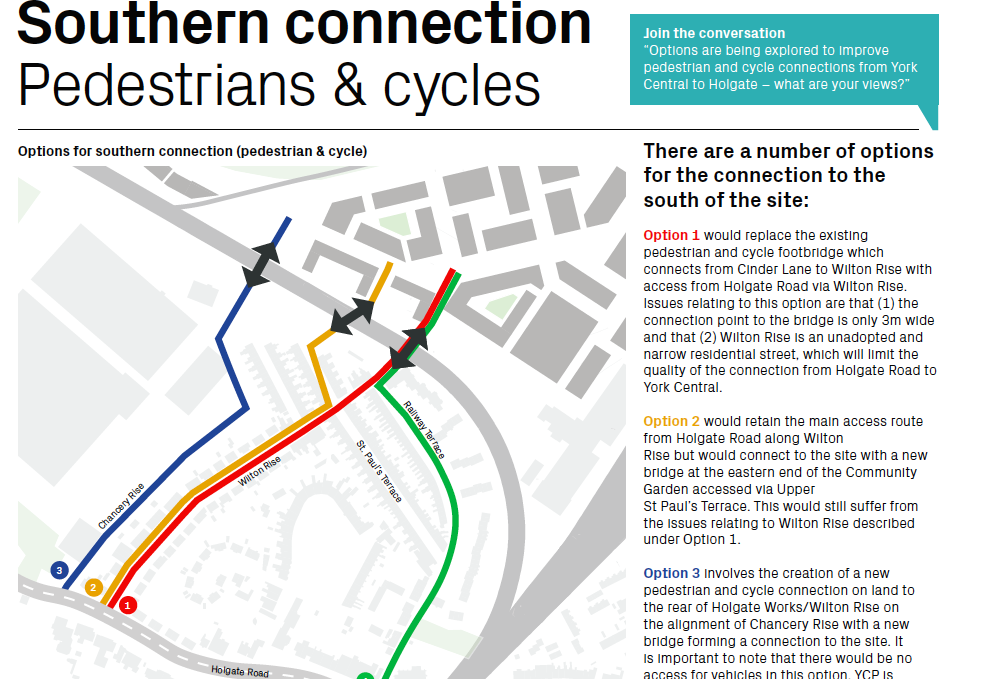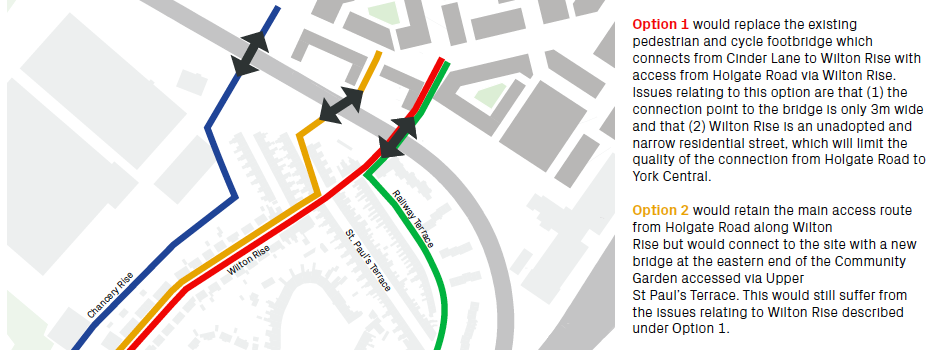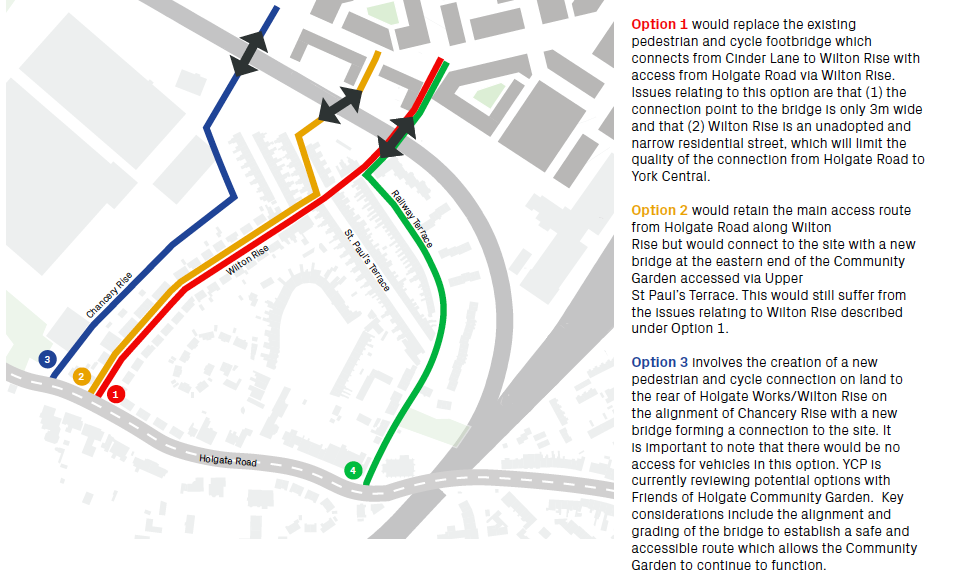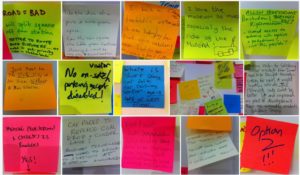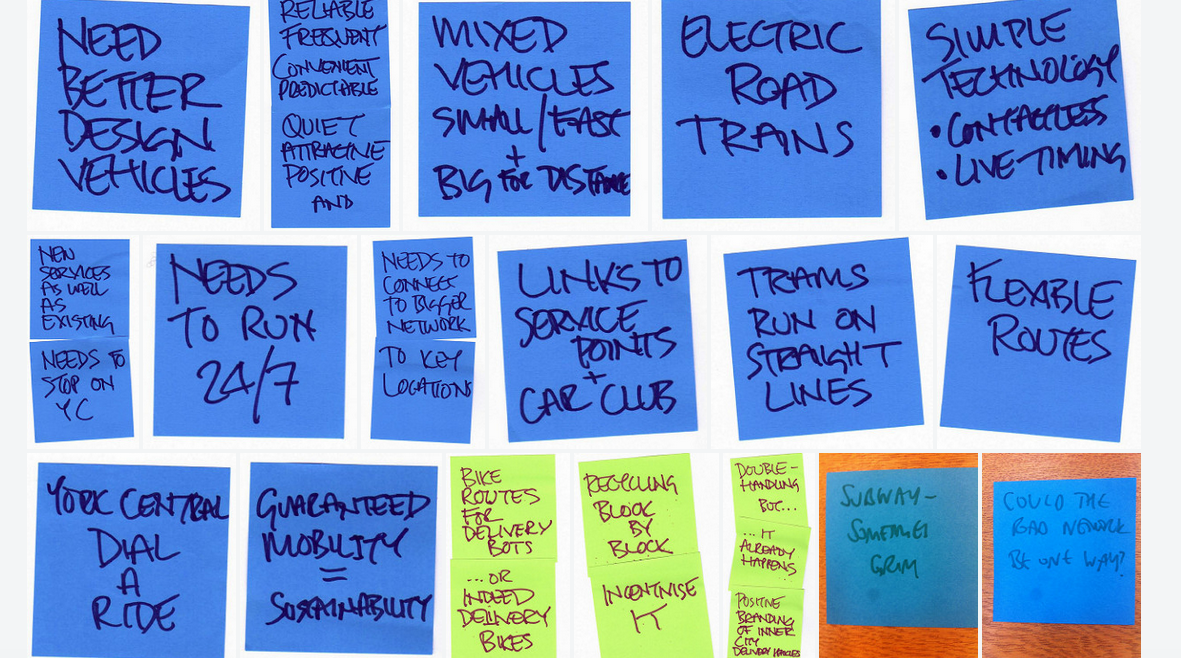
Wednesday 11th April, 7:00pm – 9:00pm
National Railway Museum Gallery
York resident Dr Tony May specialises in urban transport and has provided advice in the UK, Europe and internationally. He is the transport specialist on York Civic Trust’s Planning Committee. This event included an illustrated talk bringing in examples from the Vauban project in Freiburg to examine how sustainable transport can genuinely form the heart of new development, shaping it and making it a pleasant and more affordable place to live and work. We discussed the current emerging masterplan, how closely this reflects the priorities set out in York’s Local Transport Plan, and how it might be further developed to make both the new development and surrounding existing communities more sustainable.
Presentation
Tony May opened by giving a talk – you can read his presentation here.
Questions
There were then a series of questions from the audience.
Q: Vauban – how does the parking work?
Residents can choose to have a car, but if they have one they have to pay for a space in one of two multi-storey car parks. They pay the actual cost of provision (land & construction) which is between €18,500-€22,500 plus a monthly service charge. Car ownership is 160 cars per 1000 residents, compared with 299 elsewhere in Freiburg. There is evidence of a trend towards car ownership being less important for young people, they are interested in alternatives like car clubs and car sharing. In inner city areas, high quality public transport can encourage people to leave their cars.
Q: What about deliveries in Vauban? What if you were having a washing machine delivered?
In central London a landowner I am working with managed to reduce deliveries by 50-70% by having a central pick up point. It wouldn’t work for washing machines but then we don’t get washing machines delivered every day.
Q: Leeman Road traffic, where will it go?
There is interesting research which says that if you reduce roads then some of those journeys just don’t happen – or they happen in different ways. But knowing what people are doing instead is difficult to research. You can increase the capacity of the road network through some tinkering in order to ease congestion, as we’ve shown with the Fishergate Gyratory.
Q: I want to be able to drive down Leeman Road, not to get into the centre of York but to get across York.
Q: In terms of parking, there would need to be no on street parking and restricted parking in all neighbouring areas or there is the potential for displacement parking.
If you manage parking then you have to cover an area that is much larger to avoid displacement.
Q: Station plans: if you have a new multi-storey and buses and taxis coming to the back of the station, then all the traffic would still be coming through Marble Arch.
At our meeting with Arup it seems they were planning for a 500-place multi-storey car park, to be shared between NRM and Network Rail. There is also the potential for a multi-storey on the Railway Institute site.
Q: Does it make sense to use existing rails for Very Light Rail?
There has been talk about a Harrogate / Scarborough line (where trains only run once per hour) use of existing rails. But on other lines the frequency of trains is much greater. But Very Light Rail needs significance investment. Where are people coming from to the station, I’ve not seen those figures.
Q: I live 3 miles from York Station and go there regularly for work, but the Park and Ride is just too slow. We need tram or something similar to get people like me out of my car.
Q: HS2 – how does that fit into the future economic development of York?
There is a danger by connection big and dynamic A-type cities (like Manchester and Newcastle) that B-type cities like York suffer. If York is not active in pursuing economic development then HS2 or any increased connectivity will be to the detriment of York.
Q: Why are they doing what they are doing with Queen Street Bridge?
The Council got Yorkshire Transport Infrastructure funding to do a number of things – including the York Central Access route – and the Queen’s Street Bridge was one of them. The money needs to be spent by 2021.
Q: Can we bring trams to York?
Trams in the UK have a chequered history. They have tended to be overdesigned, like in Manchester, and are therefore very expensive. They tend to be privately operated. And they are expensive to get up and running, Leeds has been trying for 25 years. Very Light Rail is being looked at in Warwick University to be tried out in Coventry, this could be lower cost. This would require a conversation with Network Rail. This is something to be discussed in York’s Transport Plan.
Focused small group discussion
We then broke into groups to look at different questions:
Walking and Cycling: What should the networks look like?
• Better walking and cycling connection from Wilton Rise – to then connect into the new Scarborough Railway Bridge was seen as a very good thing that opened up entirely new off road routes.
• Closely Leeman Road was questioned – it is very busy and how can we stop the other new road being through route and 24h access for pedestrians was seen as essential. Rijksmuseum was mentioned.
• Prompted by this we looked at the options for Marble Arch (which ‘is an embarrassment’). It was noted that any traffic that did come through would be driving through the new square.
Public Transport: What should the network look like?
• The network needs new services in addition to re-routing of existing ones. They need to actually stop in York Central, and need to operate as close to 24/7 as possible.
• The network needs to connect both with the broader York and regional network (people want to travel from York Central elsewhere in York, not just to the centre of the city and they don’t want complex/slow connections) and with destinations within York Central such as service points, car club locations etc.
• We need better-designed vehicles so they are seen positively, but they also need all the basics so need to be convenient, predictable, quiet, attractive. Also need to make use of current good technology like contactless and live timing displays.
• We need mixed vehicles to cope with longer/shorter distances, so small for local and bigger for “trunk” routes. Small ones could be “driverless pods” or could be like the NRM road train but electric.
• Trams tend to work well on straight lines, buses cope better with wiggly networks.
• “Sustainability” has to include guaranteed mobility for those with disabilities. Can we have a York Central Dial-a-Ride?
Provision for parking:
• A key driver to the discussion was ‘tomorrow’s solutions, not today’s’. So let’s know assume everyone wants a car. Where will autonomous vehicles park?
• A lot of discussion about the benefit of meeting spaces near to the station (add in post its). It was noted Clifton Moor office space – with a lot of parking attached – was being turned into office space.
• A model like Vauban – with parking on the edge – was broadly supported. Though the group was a bit worried about how Tesco deliveries would be taken in (Tony said, carry it down the street!).
Provision for servicing
• Dedicated cycle routes give options for use as dedicated delivery routes – either with “delivery bots” or simply cycle couriers.
• Trans-shipment involves “double handling” of goods but this is part of the process anyway – we just don’t see it (look at online tracking of any parcel to see how many separate journeys are involved). There are positive branding opportunities in this – M&S can offset extra costs of handling for local transhipment by ensuring the delivery vehicles have “M&S supports local zero-carbon deliveries” all down the side.
• Recycling – needs consideration as part of the design process (keep it close to homes / work) and also management process (how can it be incentivised, like at student halls).
